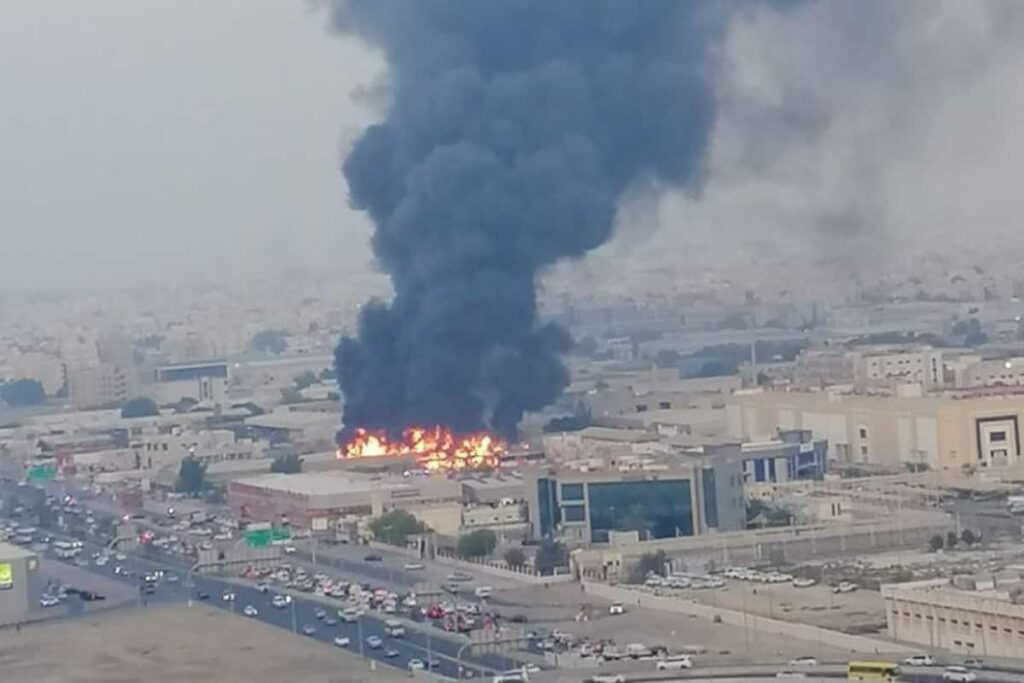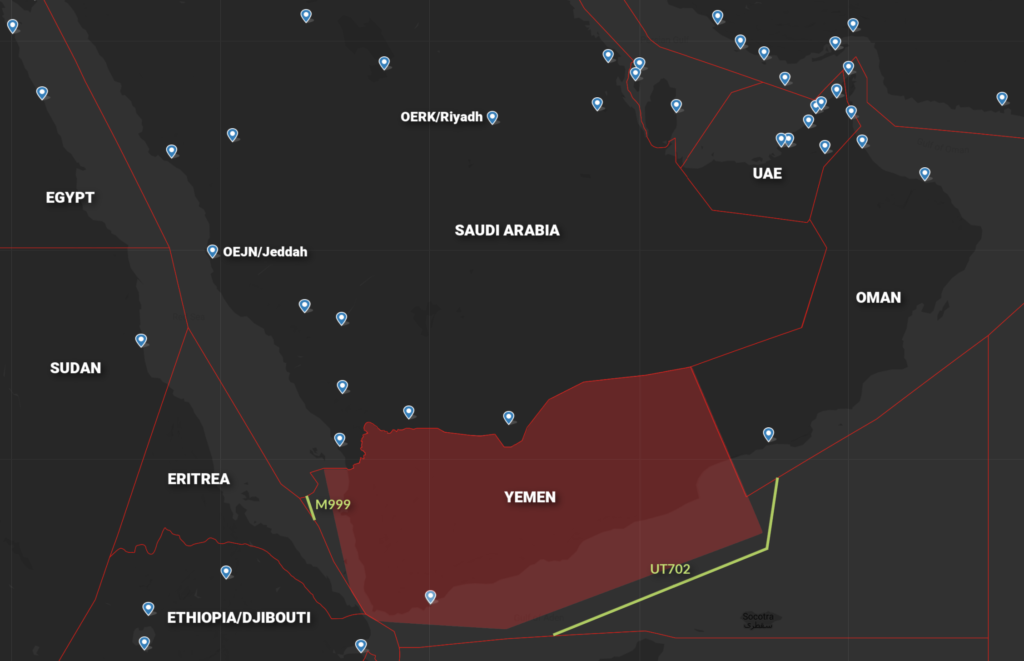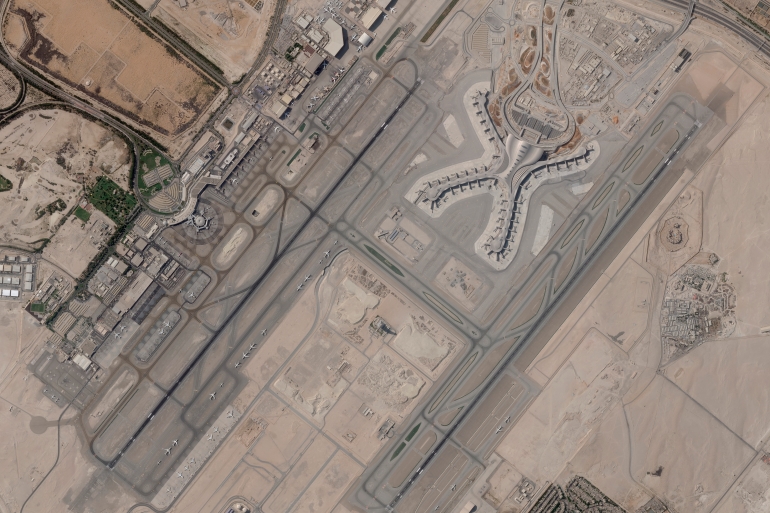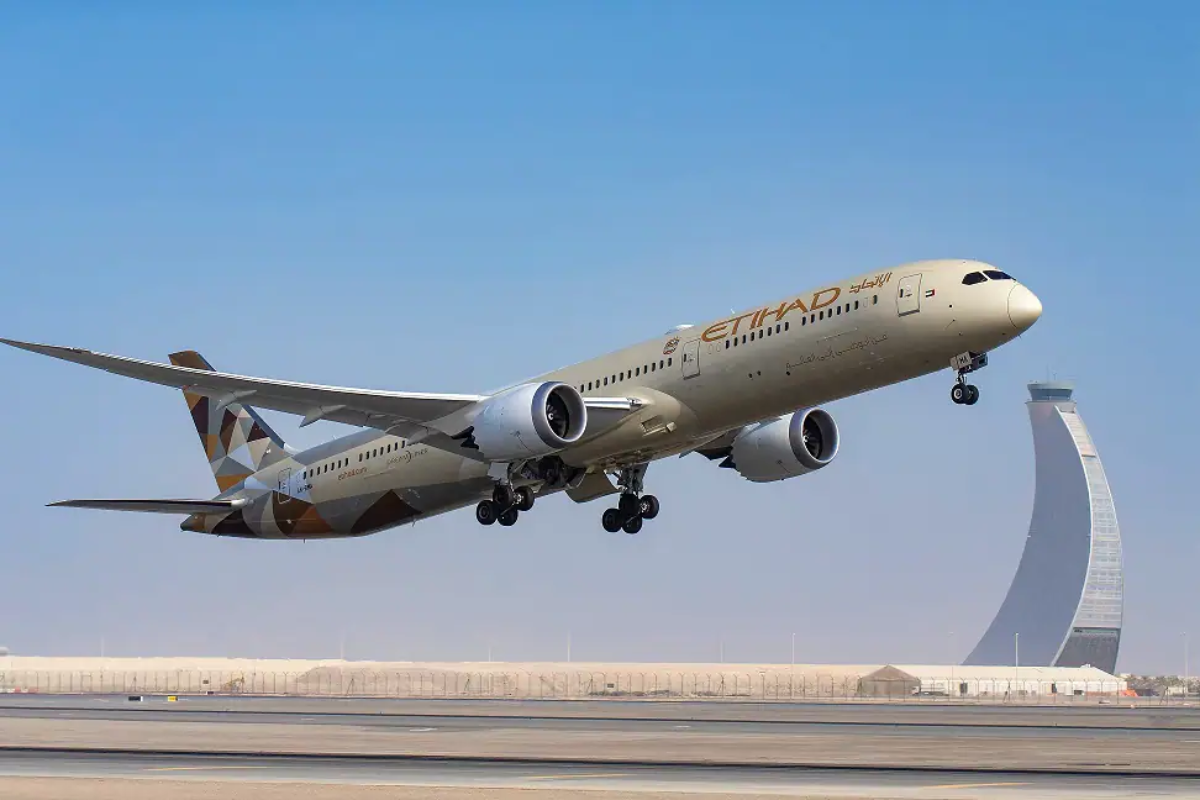On January 17, bomb laden drones reportedly struck oil tankers and a construction site in Abu Dhabi, UAE. The impact sites were close to OMAA/Abu Dhabi International Airport.
Around the same time, Al-Houthi rebels claimed the group would be launching an attack “deep in the UAE”. While this attack in itself caused no disruption at the airport, it does highlight some serious concerns for safety in UAE airspace, and the wider impact of the conflict and volatility across the Middle East region in general.
What are the concerns?
The precise technical capabilities of the Yemeni rebel forces are not entirely known. In general their drone attacks have primarily targeted Saudi airports OEAB/Abha and OEGN/Jazan which lie close to the Yemen border. The capability and intent to send weapons through Saudi Arabia and to target the UAE is an escalation on what they have previously carried out.
Drone attacks in Saudi Arabia are a fairly common and persistent threat, however, Saudi Air Defence systems manage to intercept the vast majority before damage occurs. How these drones avoided detection is a concern.

Smoke and flames from oil tankers targeted near OMAA/Abu Dhabi Airport.
What is the situation in Yemen?
Yemen has been an active conflict zone since 2014, with Saudi Arabia leading a coalition of countries from North Africa and West Asia against the rebel forces. OYSN/Sana’a airport has been impacted by multiple airstrikes throughout 2017 and 2018, and continues to be targeted in response to attacks such as this one, along with other regions of Yemen with known rebel activity.
Yemen airspace is prohibited by most major authorities. Saudi Arabian airspace has cautions for the southern Jeddah FIR bordering Yemen.
What is the general situation in the region?
While missile and drone attacks in Saudi territory have intensified recently, attacks against the UAE by the Al-Houthi group have never been confirmed until now.
OEJD/Jeddah lies almost 400 km north along the western coast and has seen some attempted attacks by drones throughout 2021, as well as attempted missile attacks.
OERK/Riyadh which lies in central Saudi Arabia has seem a number of attempts as well, however, Al-Houthi rebels denied they were responsible for a recent attempt in Riyadh. This took place in January 2021 and Saudi Air Defences destroyed the drone before any damage occurred. It was attributed to an Iraqi militant group.

Yemen airspace is prohibited and the southern Jeddah FIR bordering it has cautions in place.
Does this change the risk level for UAE airspace?
The rebels have suggested they will continue to target the UAE, however, they are targeting ‘sensitive sites’ on the ground such as oil refineries. There is no apparent intent to target aircraft or civilian airports. Unfortunately, such sites tend to be located along the coast and are in proximity to busy airspace and major airports.

Abu Dhabi airport lies along the coast, close to a major port and oil refinery.
Can we mitigate any of the risk?
The UAE have significant military defense capabilities as well. If you are operating into the region, be aware of increased military helicopter traffic. Maintain a good listening watch on frequency, and on 121.5.
The UAE do not use special procedures (like the Saudi ESCAT ones) but are proactive in closing their airspace if drones are identified within it – be aware of what your route options and alternate options are in case this occurs.
Keep an eye on Safeairspace for further updates or changes to the risk rating.
More on the topic:
- More: Saudi-Yemen Airspace Update
- More: Say GooDubai to a runway for 45 days
- More: Middle by Middle East
- More: Yemen: Airstrike on Sanaa Airport
- More: Rumbles Over Riyadh: A New Threat?
More reading:
- Latest: More face scans at the US border for BizAv flights
- Latest: Greenland NAT Alternates: Dec 2025 Update
- Latest: Mexico Customs Surprises: Pills, Vapes, and Laptop Rules
- Safe Airspace: Risk Database
- Weekly Ops Bulletin: Subscribe
- Membership plans: Why join OPSGROUP?











 Get the famous weekly
Get the famous weekly 






I appreciate the insights into this, but it seems to me that the air defenses may be a bigger threat to commercial aviation than the drones themselves. A drone itself probably won’t hurt a plane – even if it hits an airfield it’s probably going to hit empty dirt or tarmac. But if the local military launches a SAM at an incoming drone (real or imaginary) near one of their major airports, then you have SAMs and airliners in the same airspace, and all it takes is one operator error for something really bad to happen.
This isn’t to blame the UAE, or the Saudis, or any other country that finds themselves in this situation. They have to protect their country and their critical infrastructure. But I think that’s still the greatest threat to commercial aviation in this situation.
The drones are actually fairly large, and weaponised, so could be fairly detrimental to an aircraft and to ground infrastructure.
The risk to civil aircraft from anti missile/drone defences is of course a huge one. Saudi (I believe) use the Patriot Interceptor system. Until now this have proven fairly good at identifying drones whilst far out over “empty space”. How they would deal with shooting one down if in the vicinity of residential areas or airports is another question.
Saudi does have well implemented ESCAT procedures to ensure aircraft are not in the area where drones are identified for this reason, and the UAE are proactive in closing their airspace and effectively going full ground stop. But yes – it remains a concern. Interestingly the FAA are looking into approving anti missile systems on commercial aircraft so another step in the right direction hopefully.